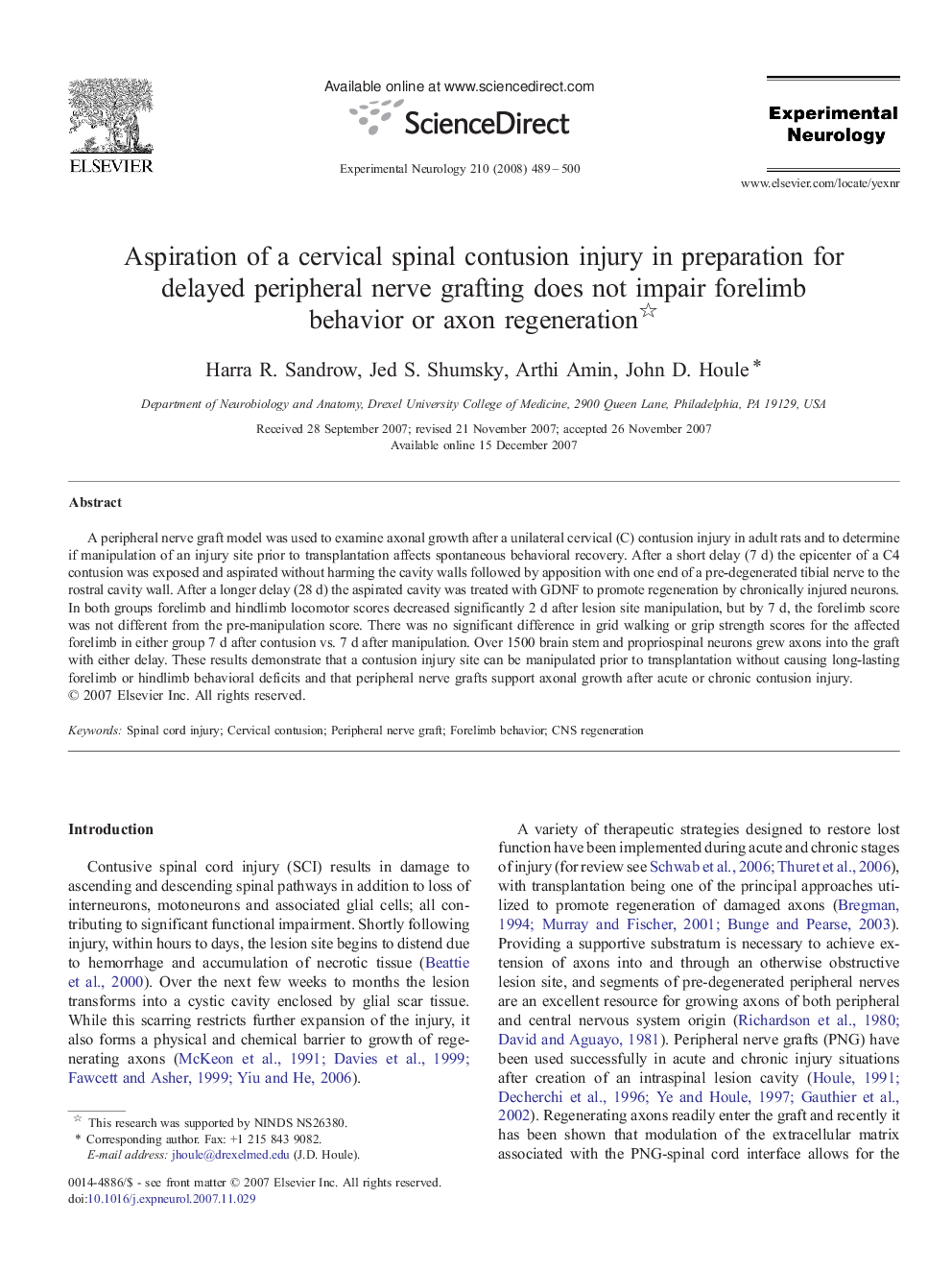| Article ID | Journal | Published Year | Pages | File Type |
|---|---|---|---|---|
| 3056775 | Experimental Neurology | 2008 | 12 Pages |
A peripheral nerve graft model was used to examine axonal growth after a unilateral cervical (C) contusion injury in adult rats and to determine if manipulation of an injury site prior to transplantation affects spontaneous behavioral recovery. After a short delay (7 d) the epicenter of a C4 contusion was exposed and aspirated without harming the cavity walls followed by apposition with one end of a pre-degenerated tibial nerve to the rostral cavity wall. After a longer delay (28 d) the aspirated cavity was treated with GDNF to promote regeneration by chronically injured neurons. In both groups forelimb and hindlimb locomotor scores decreased significantly 2 d after lesion site manipulation, but by 7 d, the forelimb score was not different from the pre-manipulation score. There was no significant difference in grid walking or grip strength scores for the affected forelimb in either group 7 d after contusion vs. 7 d after manipulation. Over 1500 brain stem and propriospinal neurons grew axons into the graft with either delay. These results demonstrate that a contusion injury site can be manipulated prior to transplantation without causing long-lasting forelimb or hindlimb behavioral deficits and that peripheral nerve grafts support axonal growth after acute or chronic contusion injury.
